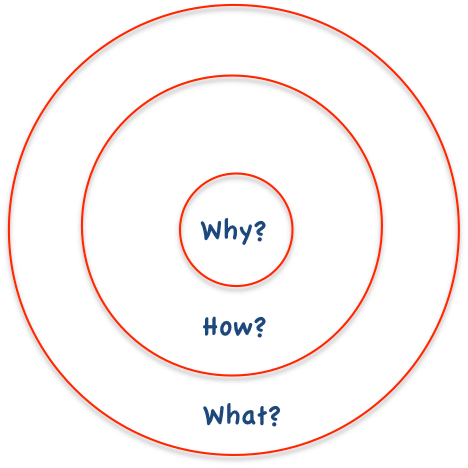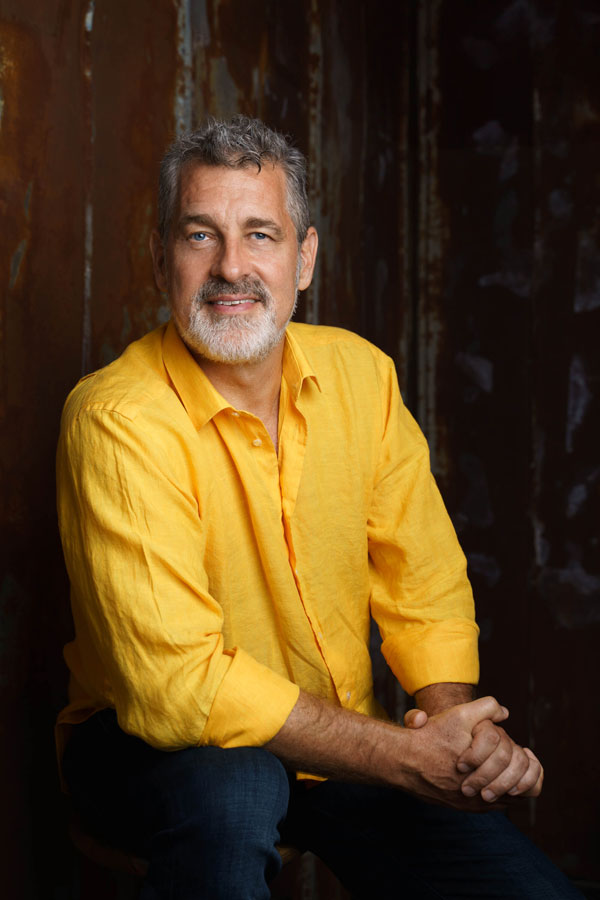Summary Insight:
Sinek says start with why. He’s close. But if you want to build a business that actually wins, start with who you serve—then align the why, how, and what around that.
Key Takeaways:
- A business exists to solve customer needs—not to promote internal beliefs.
- Start with “Who” to drive focus, relevance, and sustainable innovation.
- Sustained innovation hinges on knowing which customer to serve and when.
Simon Sinek is the author of Start with Why and the creator of concept he calls “The Golden Circle.” The Ted Talk he gave on the topic is incredibly popular, almost 10 million views as I write this.
The concept of the Golden Circle is simple. It looks like this:
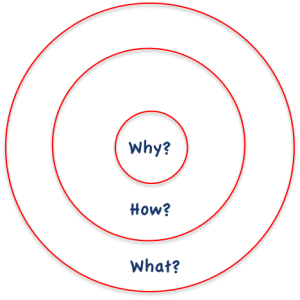
Sinek purports that great organizations seem to create their foundation by first addressing Why they exist, then How they go about their mission, and then finally, What they do.
Let me say first that I really appreciate what Sinek is doing — inspiring leaders to think about the soulful calling of their organizations and to rally others to a bigger cause beyond just selling widgets. And he does a masterful job of calling out that people don’t buy what you do, they buy why you do it, and that it’s critical to attract customers who believe what you believe. Awesome.
However, the truth is that great organizations build their core ideology by first defining and reinforcing Who they serve and the customer problem or need that they solve in the marketplace. Then they address and reinforce Why they exist, then How they go about their mission, and finally What they do.
So a modified more accurate Golden Circle should really be drawn like this:
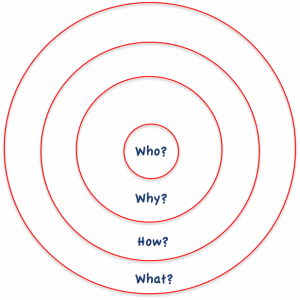
How do I know? Two reasons:
1) A business doesn’t exist to promote its beliefs. It exists to produce results for its customers (Who it serves). Understanding who your customer really is and the problem or pain they seek to solve is what differentiates a company in the marketplace and keeps it focused on the highest goal — creating customers.
It’s an easy trap to fall into. You get so caught up in your own beliefs — how you think the world should be versus how it really is — that you lose sight of who your customer is and the pain point that they really want solved. That’s why you exist. To solve a need in the marketplace. If you’re not solving needs, then you’re quickly going to go out of business regardless of how inspiring your vision statement is.
2) Leading with Who is what also allows the business to successfully navigate what in his Ted Talk Sinek calls the “Law of Innovation Diffusion.” This law is a term used to describe how innovations spread in the marketplace through a series of unique stages of customer groups. It tends to be depicted in a bell curve like this:
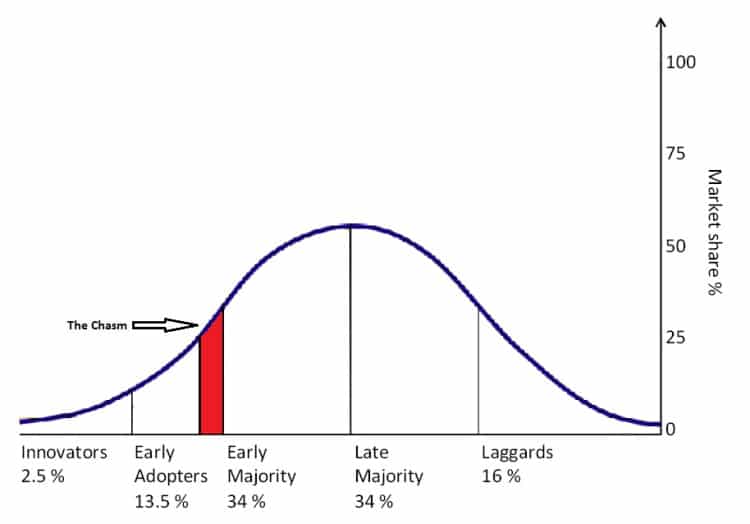
Here again Who is most important. By focusing on the Who you serve, it allows you to understand which customer segment you’re selling to at any given time and to refine/adapt your solutions to meet those customer needs over time.
Knowing which type of customer to pay attention to, and when, also allows you to anticipate and respond to changes in the marketplace and successfully drive new innovations forward. I explain how to do this in detail in Part III of my book: Organizational Physics – The Science of Growing a Business.)
I think Sinek realizes that great organizations begin with Who too. For example, when he says that Tivo should have led their branding with this, “If you’re a person who values having total control of your life, then you’ll love our product”. He’s really calling out the power of starting with Who. Also, his example of Martin Luther King also supports the notion of leading with Who. “I have a dream that all men are created equal.” Dr. King is also focusing on the Who first. Finally, the ultimate point Sinek is trying to make is that people buy what they believe (Who), not what you believe.
To sum up: The reason that your organization should build its foundation on Who is that every business exist to serve the needs of other individuals and organizations in the marketplace, who. Bring “who you serve and the problem or need that you solve” to the forefront of your organization’s consciousness. By doing so, you focus organizational efforts on the most important thing – meeting customer needs – and by monitoring and adapting to those needs, you cause the organization to adapt and innovate over time. And as Sinek points out so well, you must marry the Who with a powerful Why — a set of internal beliefs that all of your marketing and communications flow from within the organization to outside in the world. Think Who. Then Why, How, and What.
